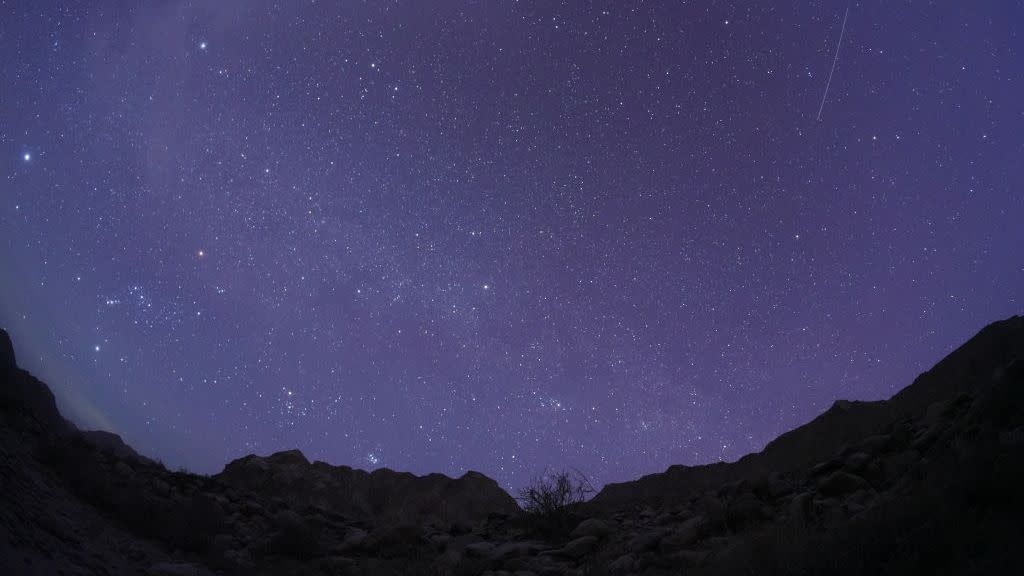The Leonids Meteor Shower Is Lighting Up the Sky. Here's How to Watch

Stargazers, you’re in for a treat! The Leonids Meteor Shower is currently active. The shower began on November 3 and will last through December 2, 2023, with the peak falling on Saturday, November 18. During the peak, onlookers can expect to see around 15 shooting stars per hour. Since that’s not as many as, say, the Perseid Meteor Shower (which can feature up to 100 meteors per hour), it’s important to know how to watch the Leonids Meteor Shower, and the best places to view it.
How to watch the Leonids Meteor Shower
Where some meteor showers are only viewable in certain areas of the country, NASA reports that the Leonids Meteor Shower can be viewed starting at midnight local time, pretty much wherever you are. “Orient yourself with your feet toward the east, lie flat on your back, and look up, taking in as much of the sky as possible,” the site instructs. “In less than 30 minutes in the dark, your eyes will adapt and you will begin to see meteors. Be patient—the show will last until dawn, so you have plenty of time to catch a glimpse.”
If you don’t want to have to wait for your eyes to adjust, another option is to head to a dark-sky location, such as a National Forest, to view the shooting star event. Whether you go for just the 18th or turn it into a weekend camping trip is up to you.
What makes the Leonids Meteor Shower Special?
While just 15 meteors per hour make the Leonids meteor shower less dense than other annual shooting star events, what makes it worth viewing is the fact that the meteors are very bright and can even be colorful. Suffice to say, it’s an astronomical event you won’t want to miss.
How rare is the Leonids Meteor Shower?
The Leonids Meteor Shower may only show a little over a dozen meteors per hour, but there’s also the Leonid Storm, which NASA reports to occur every 33 years or so. The last Leonid Meteor Storm occurred in 2002, which means the next one will likely take place around 2035. Far out as it may be, it’s a date worth keeping in mind, as these storms feature an out-of-this-world light show with thousands of meteors falling every hour during the peak. When it happened in 1966, NASA reports that the shooting stars were so abundant, it was as if they were falling like rain.
You Might Also Like
